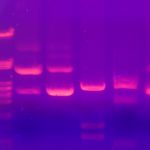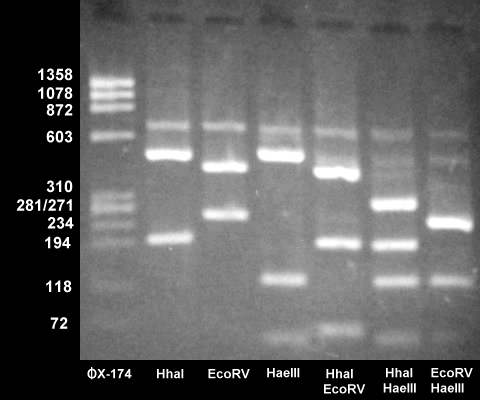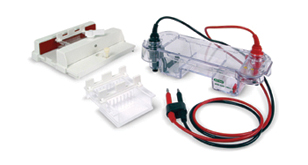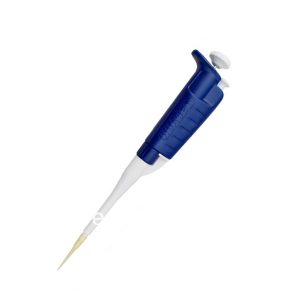DNA Fingerprinting
Restriction Enzymes and how they are used with DNA or Restriction Enzyme animation
DNA Electrophoresis – virtual lab with sound effects.
DNA Gel with labeled known DNA fragment sizes (lane 1). This also shows the different banding pattern results (different sized fragments) produced when using different restriction enzymes on the same DNA.
DNA Electrophoresis Equipment:
DNA Electrophoresis Procedure – loading and running an agarose gel (as you would have done in lab with the same equipment).
Who Stole the Crown Jewels? – a paper simulation to do in place of an actual in lab DNA electrophoresis. (Carry out this simulations and add it to your lab manual)
Since students are NOT able to perform this in a lab with equipment, we are providing a paper simulation for students to perform at home. Print* out the activity and follow the directions to cut provided DNA Samples with a restriction enzyme at set sequences of base pair units. Then you will place the fragments on a paper gel diagram according to the base pair size each fragment. An example of the procedure is provided before the actual police report and DNA sequences from the scene of the crime and 4 suspects. Who Stole the Crown Jewels?
Insert this activity into your DNA Fingerprinting lab unit and draw the resulting gel on page 13, and answer questions on page 15 (#2, 3, 4 & 5)..
* If you do not have a printer, you can write the size for all the fragments for each of the subjects on page 13, Then sketch a diagram of the resulting gel and explain your evidence for who stole the crown jewels.
The Human Genome Project or possibly this one An Introduction to the Human Genome
Molecular Visualization of DNA
0-1:48 = DNA Structure — Also seen in the Mitosis and Meiosis lab (this part is important for lab this week)
1:48-2:53 = DNA Replication –Can you relate this to DNA synthesis? = S phase that you leaned about in the Mitosis and Meiosis in lecture
2:53-4:48 = Transcription – (you will learn about this and Translation later in lecture)
4:48-6:57 = Translation –
6:58-7:47 = Hemoglobin and Sickle Cell Anemia -not narrated
[callout heading=”DNA Presentations will be compiled by Table Groups in PowerPoint and recorded with both audio and video via Zoom. Share the Zoom video with your TA due by Apr. 13-17″ headingicon=”noicon” textalign=”textcenter” type=”basic” bgcolor=”huntyellow”]To practice your presentations skills, each group of students will receive a DNA Topic and Target Audience to present to the class. These presentations should run 5-10 minutes. Each individual will need to turn in a self assessment of their own presentation skills. See the links below for more information. This will help you better organize and present your Final Bacterial Project to the class.[/callout]
DNA Presentation Expectations and Self Assessment – 30 points
DNA Presentation Evaluation Sheet
Important Technologies in Molecular Biology
PCR (Polymerase Chain Reaction) – used to make larger samples of DNA samples
Genome Editing with CRISPR-Cas9 a new and powerful technology with many applications.
Short Reads:
The History of Genetic Fingerprinting
DNA Fingerprinting is Everywhere -discusses some applications.
DNA “Fingerprint” Can Aid Food Safety – NCSU researcher



